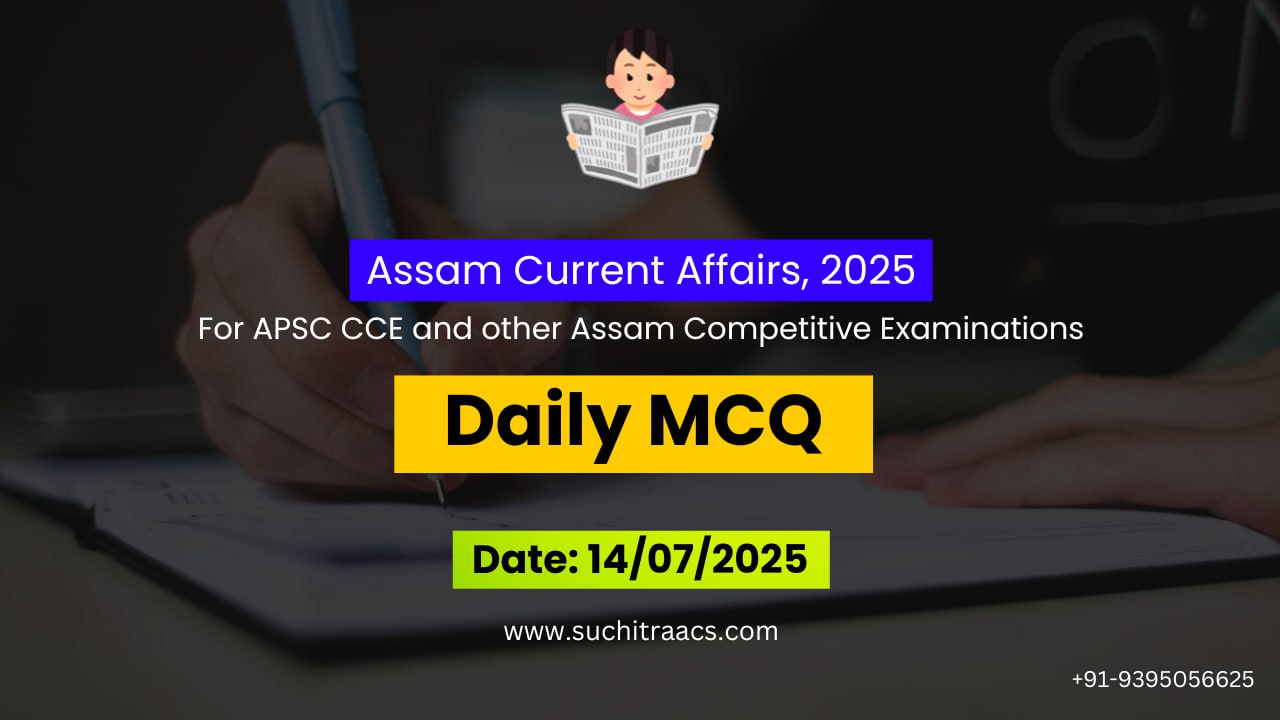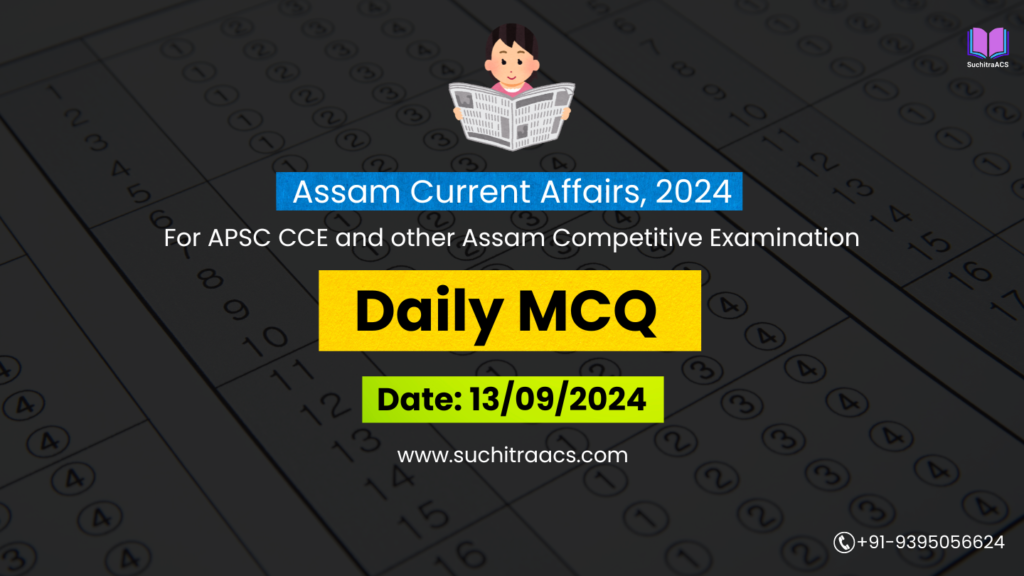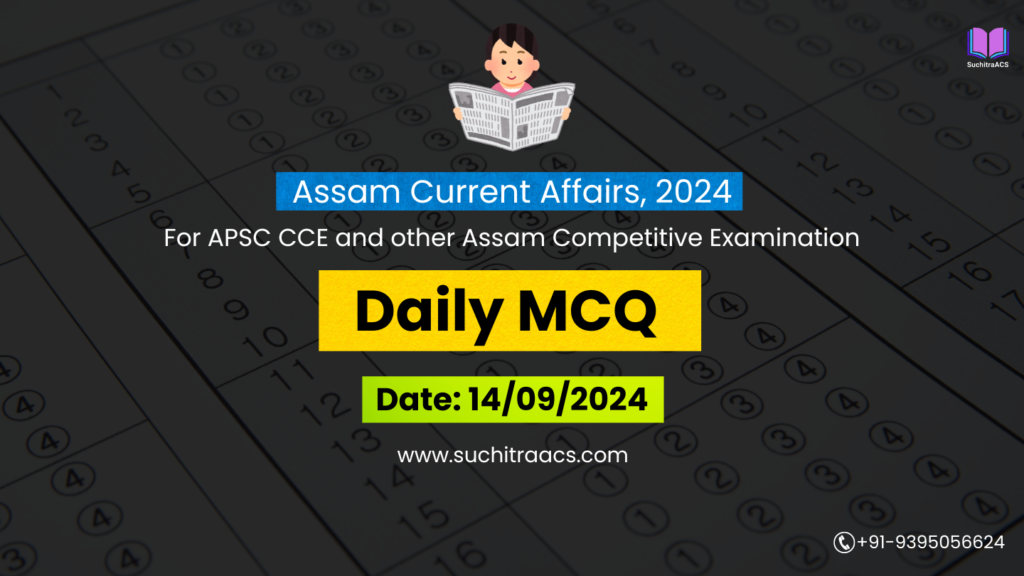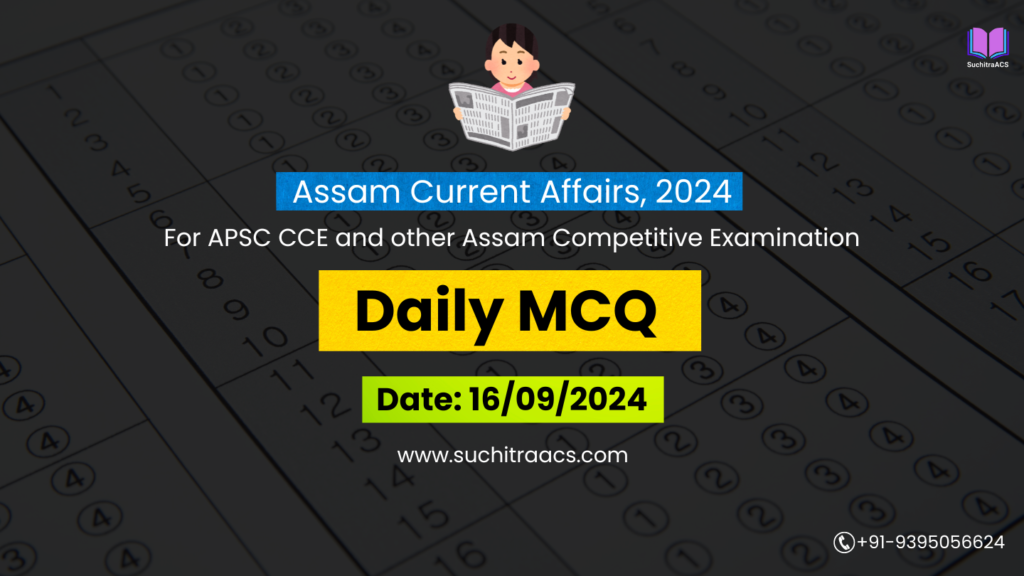APSC MCQs / APSC Prelims Practice Questions based on Assam Tribune (Daily) –14/07/2025
For APSC CCE and other Assam Competitive examinations aspirants, practicing Daily MCQs is vital. This blog covers most important Prelims questions from the Assam Tribune today (14-07-2025). These issues are key for both APSC Prelims syllabus, offering insights into the important topics of current affairs.
✨ APSC CCE Online Coaching, 2026

APSC MCQs / APSC Prelims Practice Questions (Date: 14/07/2025)
🔹 Topic 1: Power Infrastructure Upgrade in Assam
Q1. Which of the following statements about the Revamped Distribution Sector Scheme (RDSS) are correct?
- It is a centrally sponsored scheme to reduce AT&C losses.
- It aims to install smart meters and improve feeder segregation.
- It focuses only on generation and transmission, not distribution.
Select the correct answer:
(a) 1 and 2 only
(b) 1 and 3 only
(c) 2 and 3 only
(d) 1, 2 and 3
✅ Answer: (a)
📘 Explanation:
- RDSS focuses on distribution, not generation or transmission (so statement 3 is incorrect).
- It targets reduction in AT&C losses, smart metering, feeder segregation, and reliability improvement.
Q2. In the context of Assam’s power sector, a low HT:LT line ratio indicates:
(a) Higher efficiency in rural electrification
(b) Better load balancing in urban grids
(c) Increased technical losses due to overloaded LT lines
(d) Optimal infrastructure usage for remote connectivity
✅ Answer: (c)
📘 Explanation:
A low HT:LT ratio (e.g., Assam’s 1:3 instead of ideal 1:1.2) indicates more reliance on low-tension lines, which suffer higher losses and overload.
🔹 Topic 2: IIT-Guwahati’s JE Diagnostic Tool
Q3. Japanese Encephalitis (JE), recently detected by a point-of-care device developed by IIT-Guwahati, is:
(a) Caused by a protozoan spread by Anopheles mosquitoes
(b) A viral disease spread by Culex mosquitoes
(c) Caused by a fungus found in rice fields
(d) A bacterial disease spread by contaminated food
✅ Answer: (b)
📘 Explanation:
JE is a viral infection spread by Culex mosquitoes, primarily affecting the central nervous system.
Q4. Which of the following are features of point-of-care diagnostic devices?
- Require advanced lab settings and refrigeration
- Offer rapid results at the patient’s location
- Useful in low-resource settings
- Always use invasive blood tests
Select the correct answer:
(a) 1 and 2 only
(b) 2 and 3 only
(c) 3 and 4 only
(d) 1, 2, 3 and 4
✅ Answer: (b)
📘 Explanation:
- Statement 1 is false—PoC devices are designed for non-lab use.
- Statement 4 is also false—many are minimally invasive or saliva/urine-based.
🔹 Topic 3: NSG Hub in Assam
Q5. The National Security Guard (NSG), recently proposed to be stationed in Assam, functions under the:
(a) Ministry of Defence
(b) National Security Council Secretariat
(c) Ministry of Home Affairs
(d) Cabinet Secretariat
✅ Answer: (c)
📘 Explanation:
NSG is an elite counter-terror force functioning under the Ministry of Home Affairs (MHA).
Q6. Which of the following are core functions of the NSG?
- Urban counter-terror operations
- VIP protection
- Border management
- Hostage rescue and anti-hijacking operations
Select the correct answer:
(a) 1, 2 and 3 only
(b) 1, 2 and 4 only
(c) 2, 3 and 4 only
(d) 1, 3 and 4 only
✅ Answer: (b)
📘 Explanation:
NSG is not responsible for border management. That is the domain of forces like BSF, Assam Rifles, SSB.
🔹 Topic 4: Assam’s Ethnoveterinary Practices
Q7. Ethnoveterinary medicine (EVM), recently recognised in Assam, refers to:
(a) Advanced pharmacological treatment for animals
(b) Traditional community-based animal healthcare practices
(c) Livestock breeding using gene editing
(d) Veterinary systems taught in AYUSH colleges
✅ Answer: (b)
📘 Explanation:
EVM refers to indigenous practices used by rural communities to treat animal diseases using local herbs and methods.
Q8. Which of the following are advantages of ethnoveterinary practices?
- Promote conservation of indigenous medicinal plants
- Help reduce antimicrobial resistance
- Require expensive pharmaceutical formulations
- Empower rural women and SHGs
Select the correct answer:
(a) 1 and 3 only
(b) 2 and 4 only
(c) 1, 2 and 4 only
(d) 1, 2, 3 and 4
✅ Answer: (c)
📘 Explanation:
The rest are key advantages: ecological, medical, and socio-economic.
Statement 3 is incorrect—EVM avoids expensive drugs.
✨ APSC CCE Courses, 2025-26 offered by SuchitraACS


🔔 Join Our WhatsApp Study Group!
For exclusive access to premium quality content, including study materials, current affairs, MCQs, and model answers for APSC CCE and other Assam competitive exams.
Click here to join: SuchitraACS Study WhatsApp Group
📚 Want to know more about SuchitraACS’s most affordable courses?
Click here to know more: SuchitraACS Courses for APSC CCE and Assam Competitive Examinations




